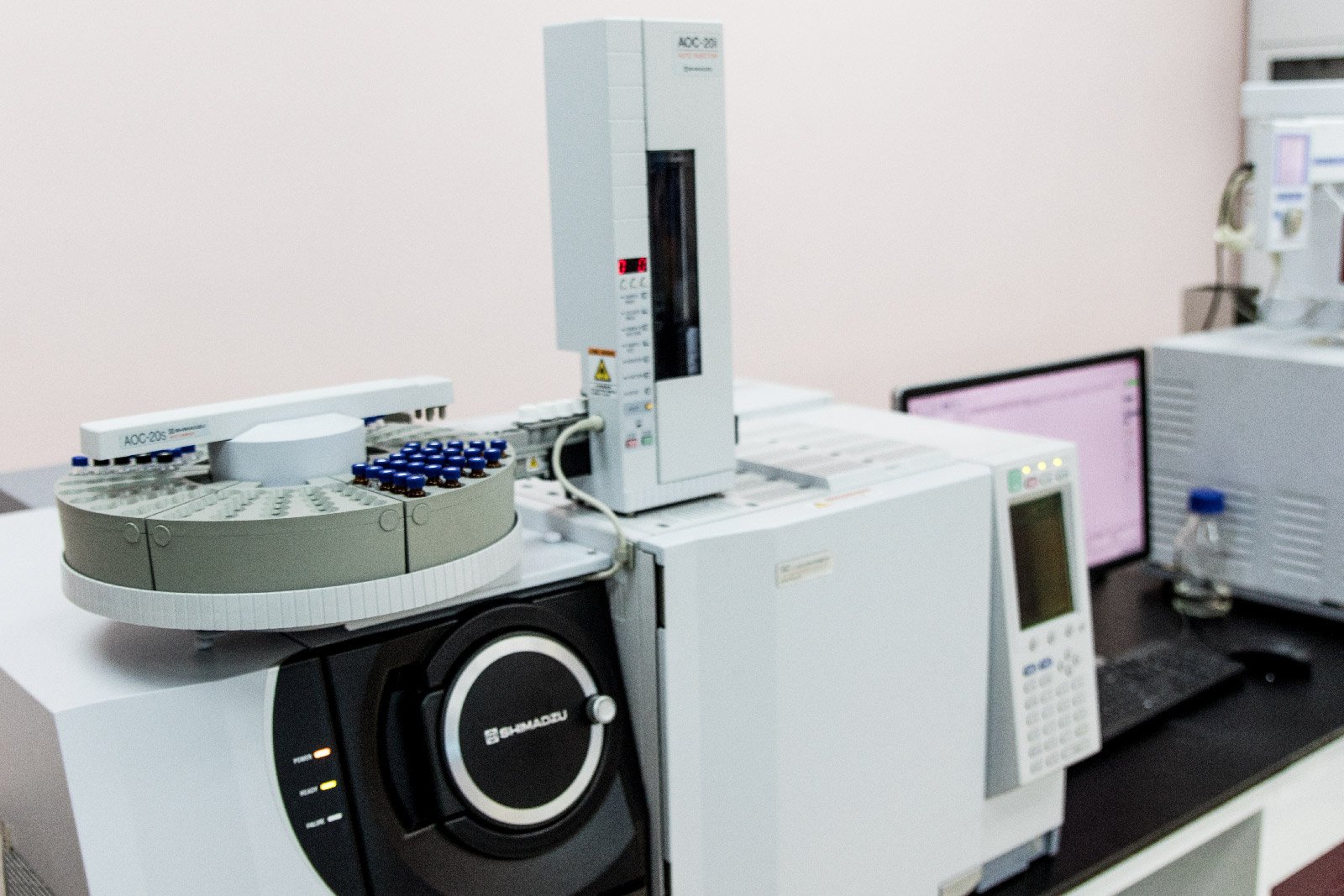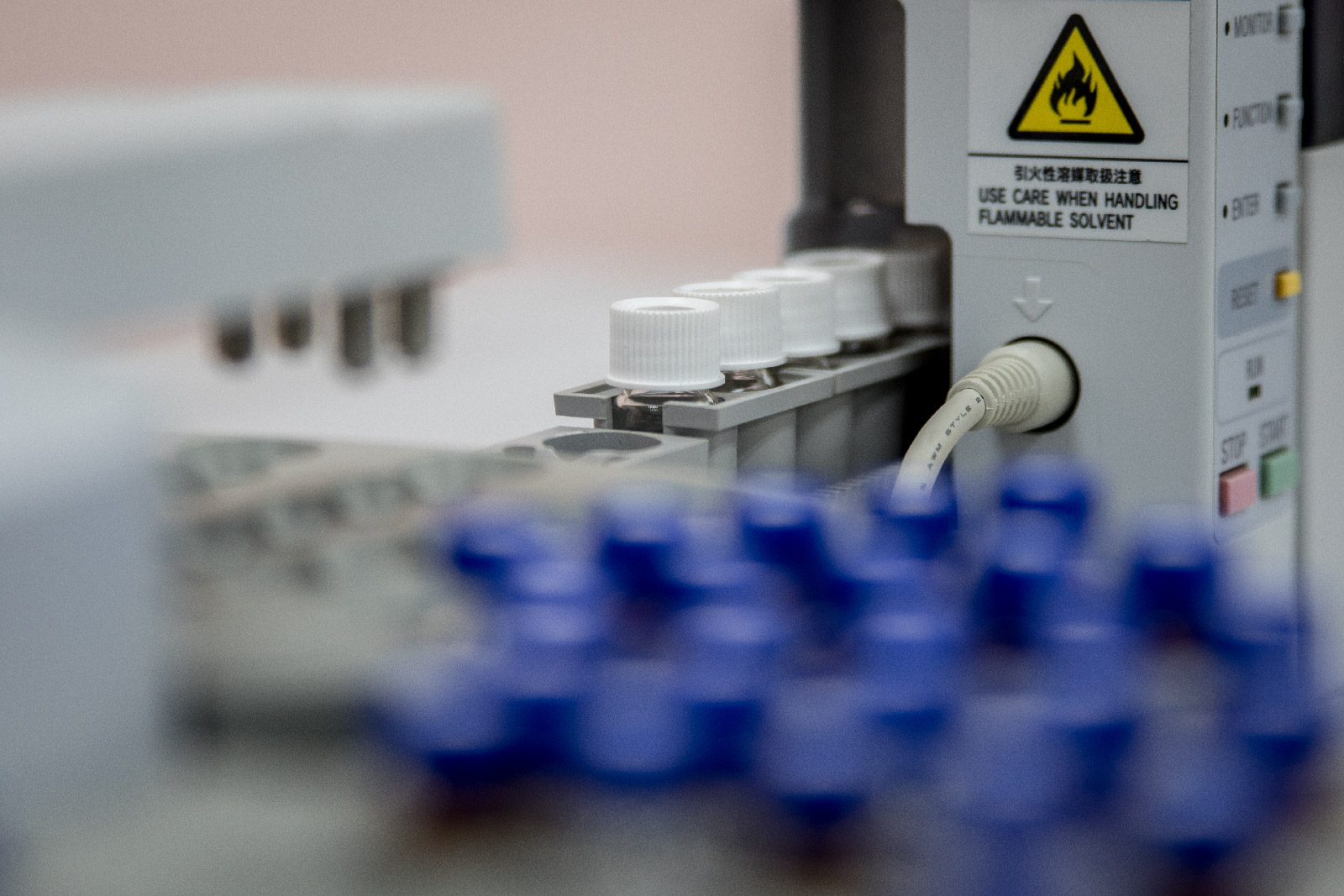Gas Chromatography

Gas chromatography (GC) is an analytical technique used to separate and detect the chemical components of a sample mixture to determine their presence or absence and/or quantities. These chemical components are usually organic molecules or gases. For GC to be successful in their analysis, these components need to be volatile, usually with a molecular weight below 1250 Da, and thermally stable so they don’t degrade in the GC system. The sample solution injected into the instrument enters a gas stream which transports the sample into a separation tube known as the "column." Helium or nitrogen is used as the carrier gas. The various components are separated inside the column. The detector measures the quantity of the components that exit the column. To measure a sample with an unknown concentration, a standard sample with a known concentration is injected into the instrument. The standard sample peak retention time (appearance time) and area are compared to the test sample to calculate the concentration.

GC is a widely used technique across most industries, including for:
- Quality control in the manufacture of automotive, chemical, petrochemical and pharmaceutical products.
- Research purposes from the analysis of meteorites to natural products
- Safety and monitoring of environmental samples, microplastics, food and beverage and forensics samples
Gas chromatographs are commonly coupled with flame-ionization detector (FID) or mass spectrometers (GC-MS) to enable the identification of the chemical components.
